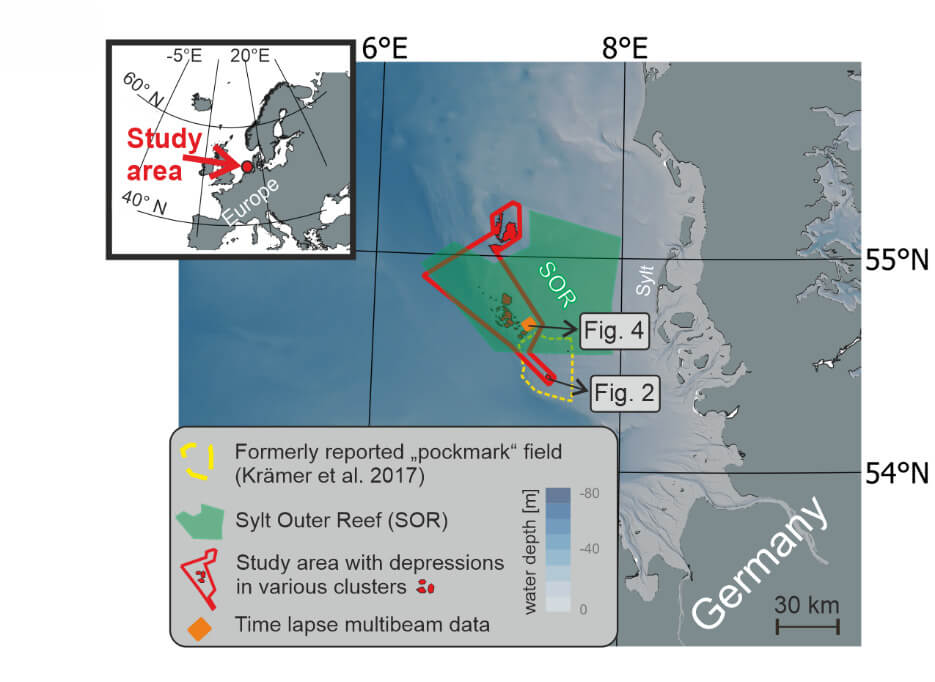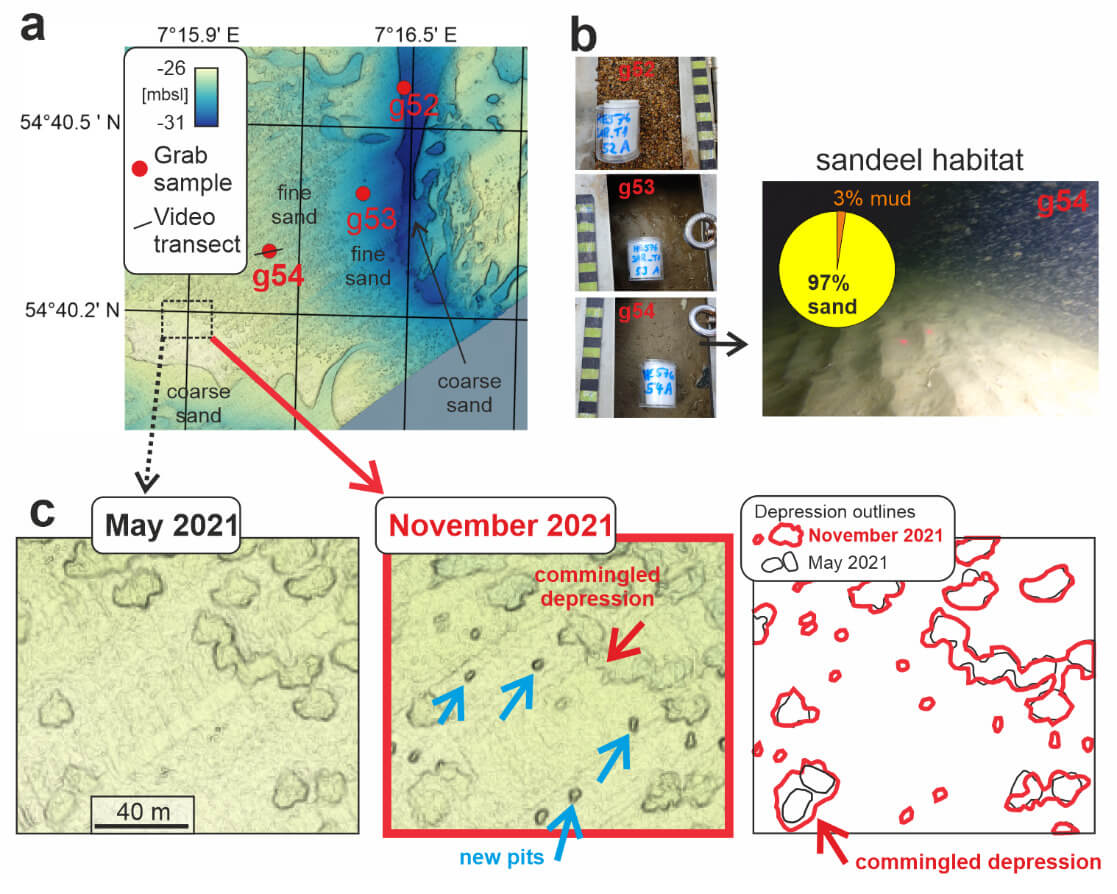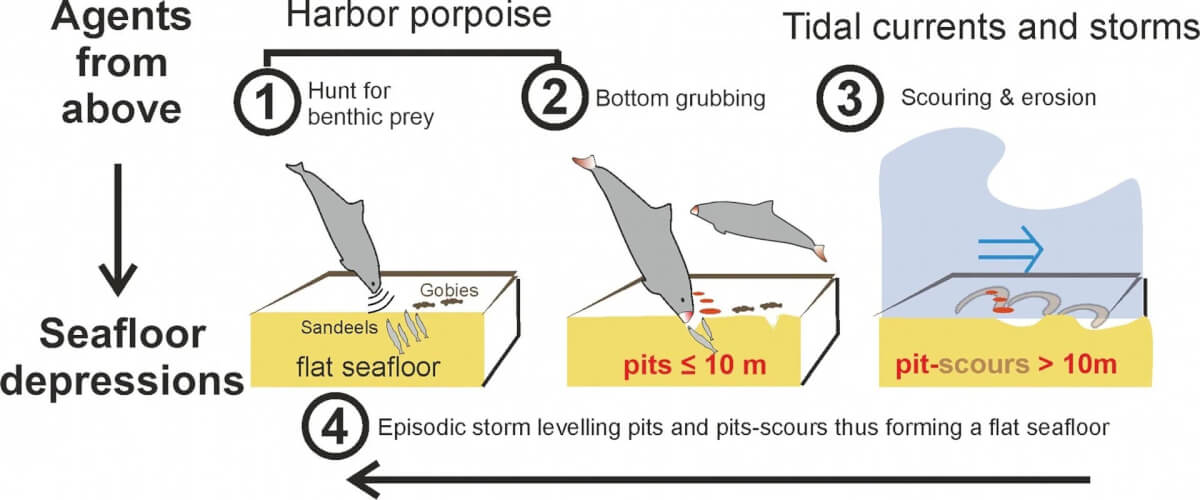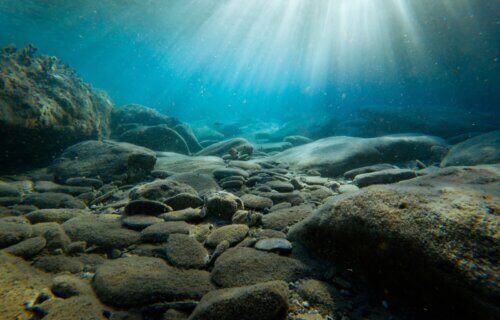KIEL, Germany — Under the sea, such wonderful things surround you on the ocean floor. Now, a new study is revealing exactly what happens, as animals of the ocean — particularly porpoises and sand eels — play a significant role in shaping the seafloor, solving a mystery of what’s causing millions of strange holes at the bottom of the sea.
In the North Sea, Kiel University researchers in Germany observed thousands of shallow, crater-like depressions in the seabed known as pockmarks. These pockmarks, previously thought to be formed by fluid discharge such as methane, are now understood to be closely linked to the feeding habits of porpoises and sand eels.

“Our results show for the first time that these depressions occur in direct connection with the habitat and behavior of porpoises and sand eels and are not formed by rising fluids,” says study lead author Dr. Jens Schneider von Deimling, a geoscientist at Kiel University, in a university release.
“Our high-resolution data provide a new interpretation for the formation of tens of thousands of pits on the North Sea seafloor, and we predict that the underlying mechanisms occur globally, but have been overseen until now.”
The study focused on the North Sea off Heligoland, utilizing advanced multibeam echosounder technology to examine the seafloor down to centimeters. This technology, taught and practiced at Kiel University, revealed 42,458 shallow pits with an average depth of just 11 centimeters, differing in morphology from typical pockmarks.
Researchers, including those from the Alfred Wegener Institute and the University of Veterinary Medicine Hannover, discovered that porpoises hunting for sand eels, a key food source, leave these pits in the seabed. Sand eels, which spend most of the year buried in shallow sediments, are vital to the diet of North Sea porpoises.

“From analyses of the stomach contents of stranded porpoises, we know that sand eels are an important food source for the North Sea population,” says Dr. Anita Gilles of the TiHo-Institute for Terrestrial and Aquatic Wildlife Research (ITAW), who has long studied the biology of marine mammals.
The interdisciplinary approach of the study, combining geological studies, geophysical sonar measurements, vertebrate behavior, and oceanographic analysis, was key to these findings.
“We had to come up with an alternative hypothesis for the formation,” notes Dr. Schneider von Deimling. “This allowed us to predict where potential porpoise feeding sites are, and that is exactly where we found the pits – always close to sandeel habitats. Our extensive and multidisciplinary data analysis now provides a conclusive explanation for our harbor porpoise pits hypothesis.”
The implications of this study are far-reaching, both geologically and biologically. The findings suggest that marine vertebrates could significantly influence the seafloor on a global scale, impacting benthic ecosystems. In the studied area alone, these pits cover nine percent of the seafloor, with an estimated 773,369 tons of sediment deposited over 1,581 km².

“Our results have far-reaching implications from a geological and biological perspective. They can help to assess the ecological risks associated with the expansion of renewable energies in the offshore sector and thus improve marine environmental protection,” concludes Dr. Schneider von Deimling.
The study is published in the journal Communications Earth & Environment.
